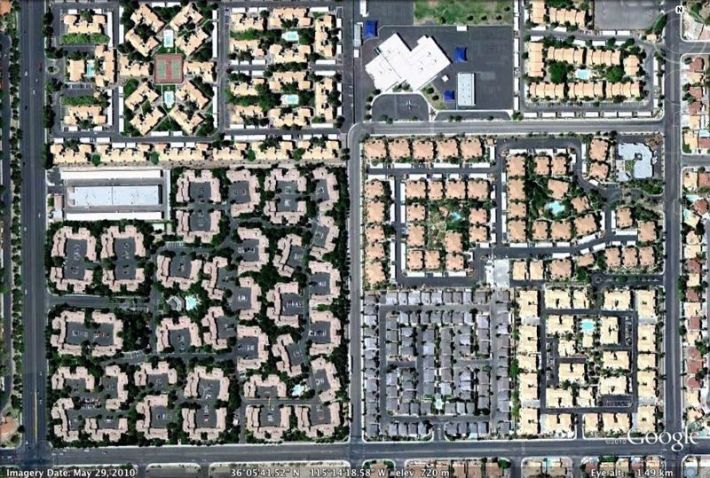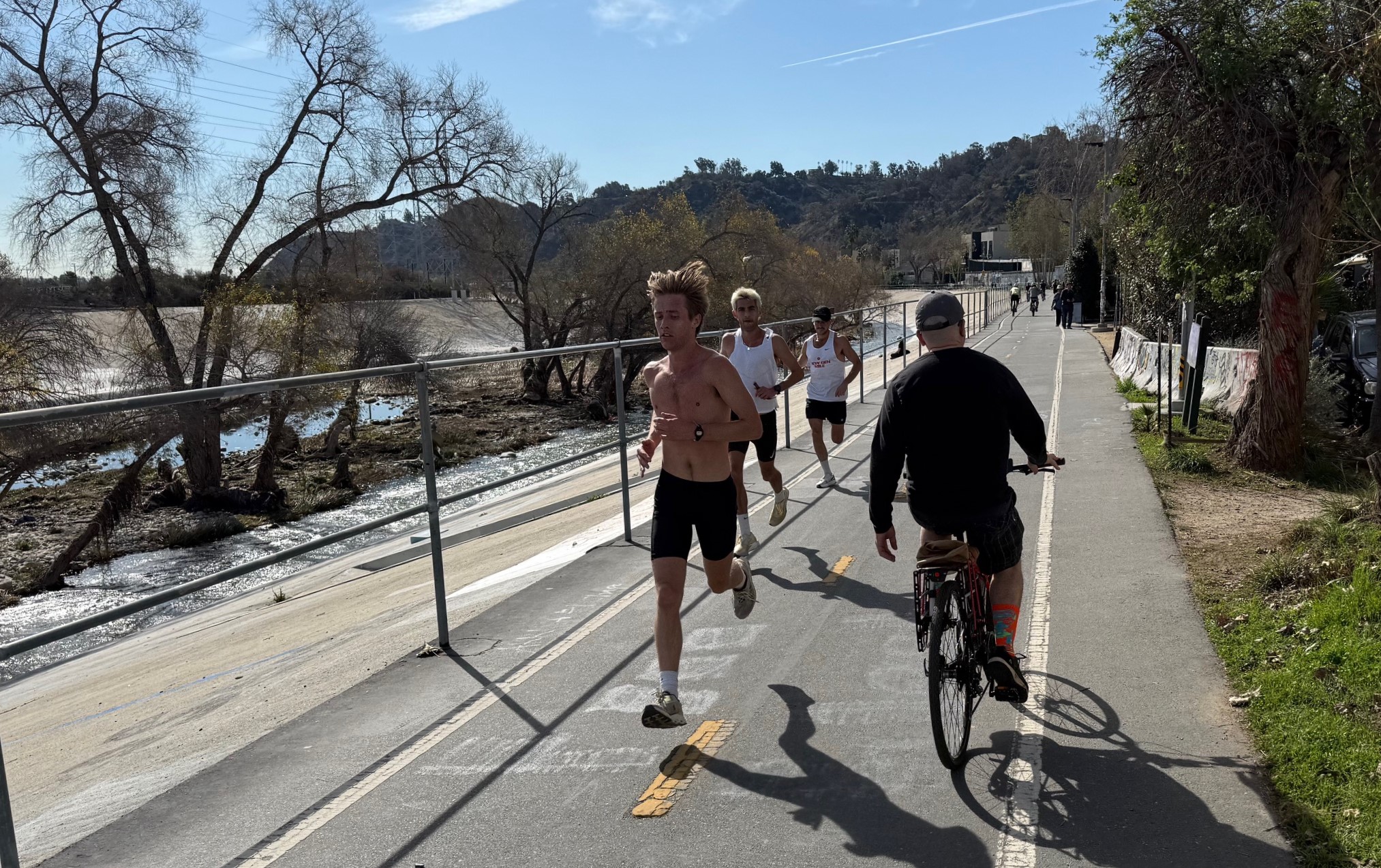There’s a maxim in the planning world that public transit is simply less effective at lower densities.
But is that always the case? And what exactly do we mean when we talk about “low density”? In a post today on Human Transit, Jarrett Walker argues that the way we talk about and measure density can obscure more important factors that determine the success or failure of transit.
Walker uses the recently published Transport for Suburbia, by Paul Mees, as his jumping-off point. Mees argues that the conventional wisdom runs counter to the objectives of transit advocates because it advances the idea that low density areas must accept car dependence as inevitable. In one of the more provocative sections of the book, Mees points out that if you measure the metro areas of Vancouver and Las Vegas, Vancouver is, on average, less dense, but has a much higher share of trips on transit.

Walker explains that one reason for the disparity is that Vegas-style density and urban design interfere with high-quality transit:
Las Vegas has massive quantities of apartment buildings, which yield a high average density. But at two levels of scale, these are deployed in patterns that make effective transit difficult. On a macro level, Las Vegas is mostly midrise apartments spread over a large area, requiring transit to cover more distance to serve them; this is the most obvious explanation for Las Vegas’s low transit performance compared to highrise Vancouver. But the micro explanation is important too. In the details of street pattern and pedestrian circulation, typical Las Vegas urban fabric is designed for motorists and hostile to pedestrians. Average urban density says nothing about either of these factors, even though they are what really determine the transit experience in each city.
Elsewhere on the Network today: Tacoma Tomorrow calls out the city for failing to follow through on the sustainability aspects of its laudable Mobility Master Plan. The Transport Politic discusses how the recession is squeezing transit expansion plans across the country. And the Ohio Bike Lawyer argues that “Share the Road” signs marginalize cyclists and misrepresent their rights.






